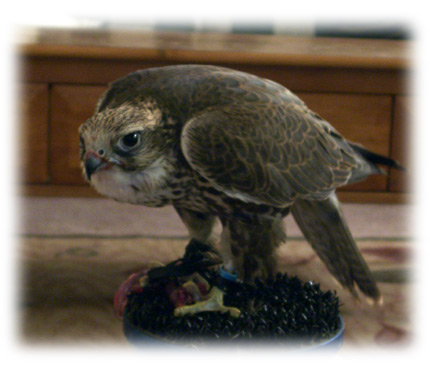This bird is not native to North America. It is a widespread bird found across most of Eastern Europe, Asia, Russia, and China.
 |
An adult male Saker falcon |
The Saker can vary from a dark brown to almost a cream color, but speckling through the breast and wings is typical.
Morphology
This bird is one of the largest falcon species and similar to the Gyr.
Hunting
Typical quarry caught with the Saker will be small to medium sized rodents, doves, and starlings. This bird has a very similar attack style to the Gyrfalcon and it is thought that they are closely related.
Trivia
The Saker is not terribly common in the United States. Personable birds, Sakers and Saker-hybrids have the unappealing trait of wanting to migrate in warm weather. This means flying them in the South, late-summer, autumn, spring, or mid-afternoon isn't recommended. They are a favorite of the Arab falconers for their tenacious passion for the hunt.
These birds are noted to have a slower metabolism that one might think and tend to build fat quickly in their bodies. Falconers with much experience with them in the Middle East tend to purge or rangle them once every couple of weeks. Keeping them high in weight from fat and not purging them properly will tend to entice them to migrate.
Commonly called the Steppe Saker.
The male Saker is called a Sakeret.
Links
https://blueplanetbiomes.org/saker_falcon.php